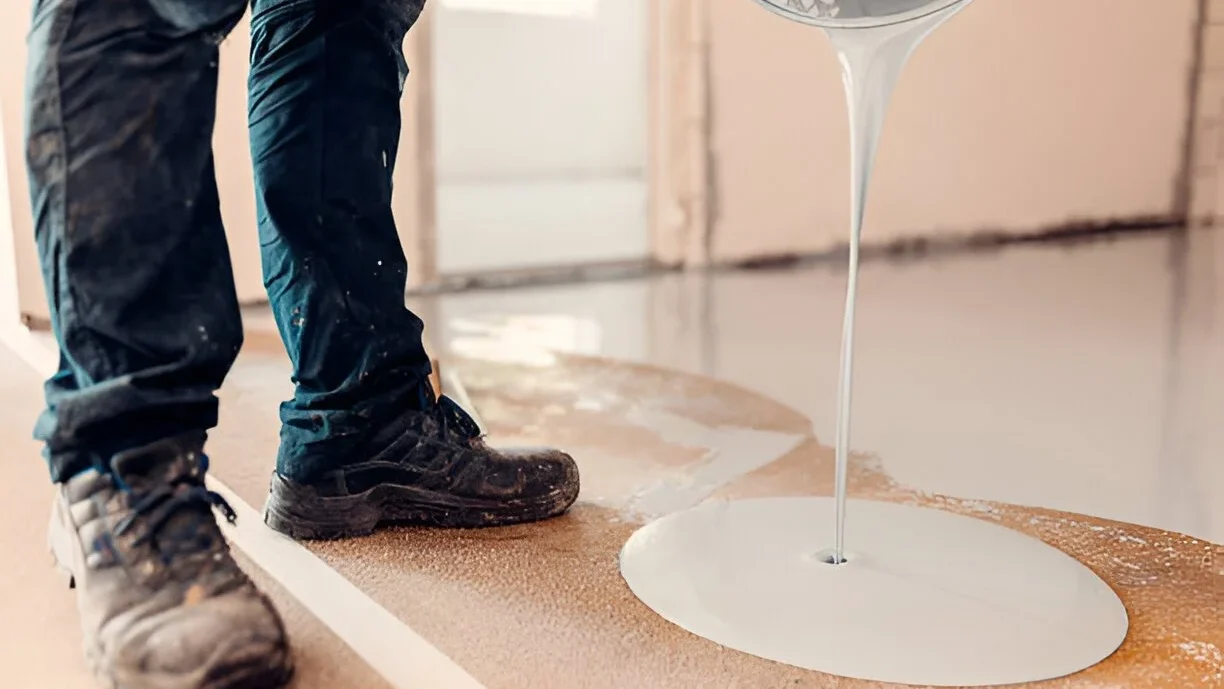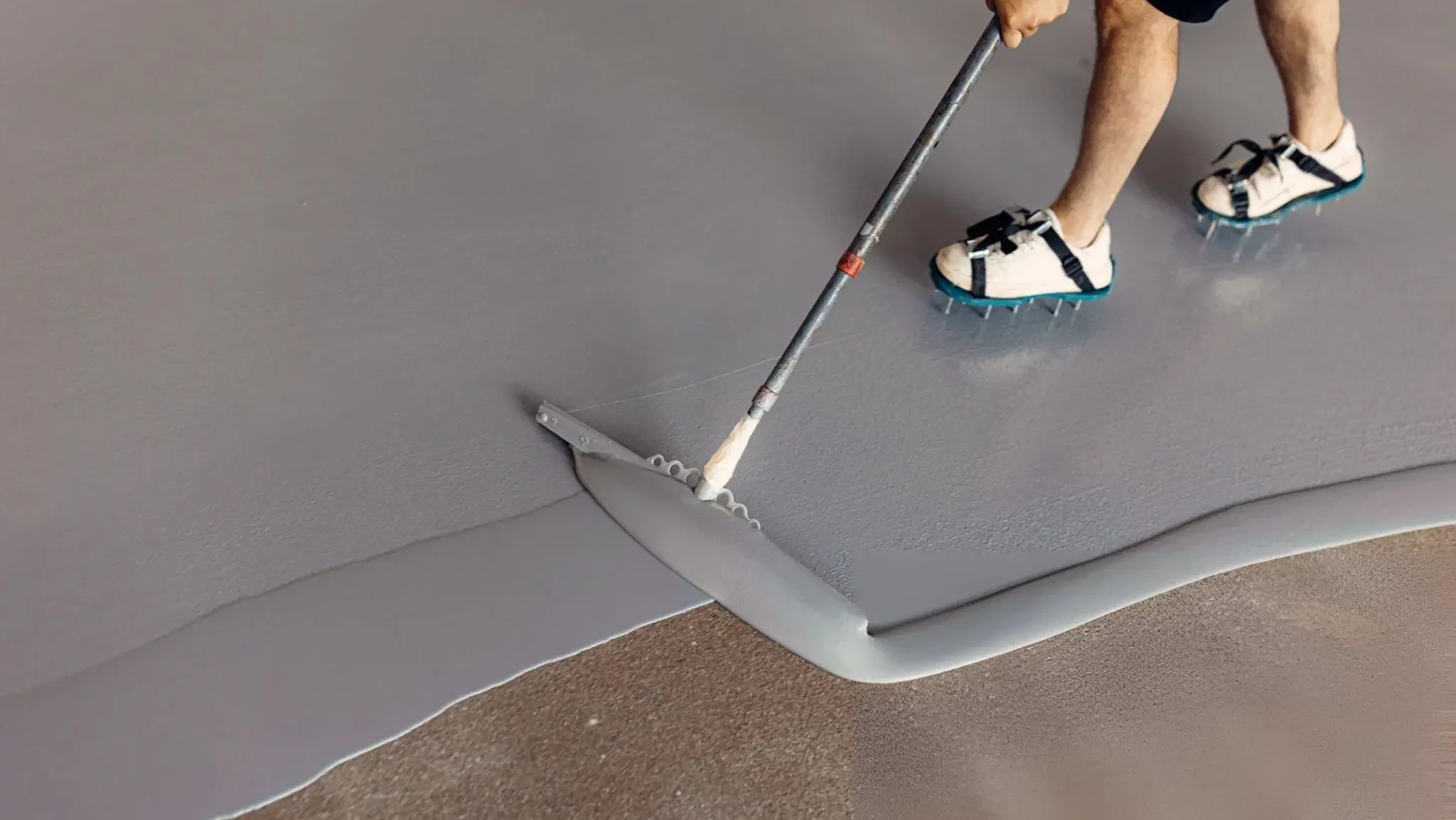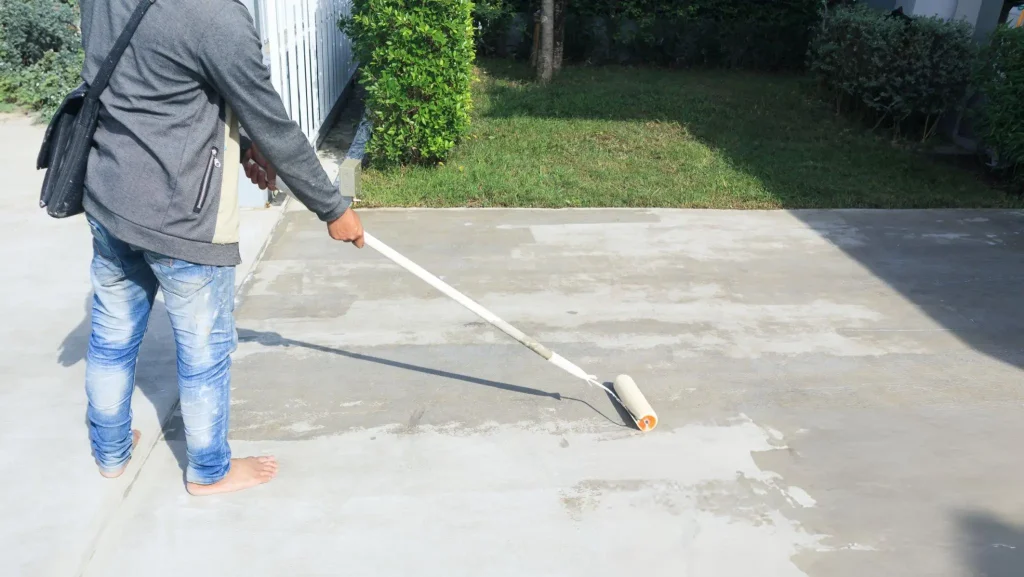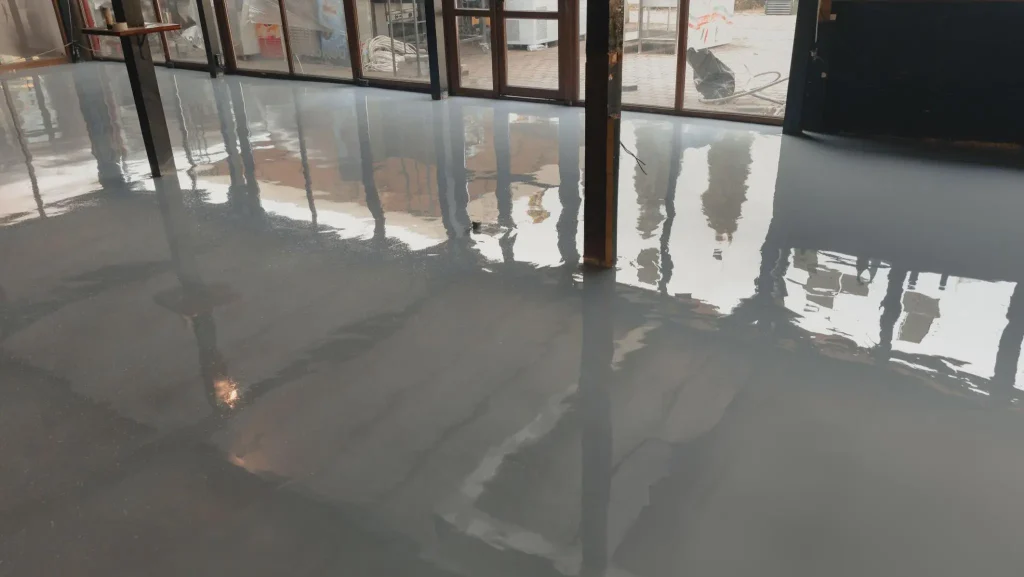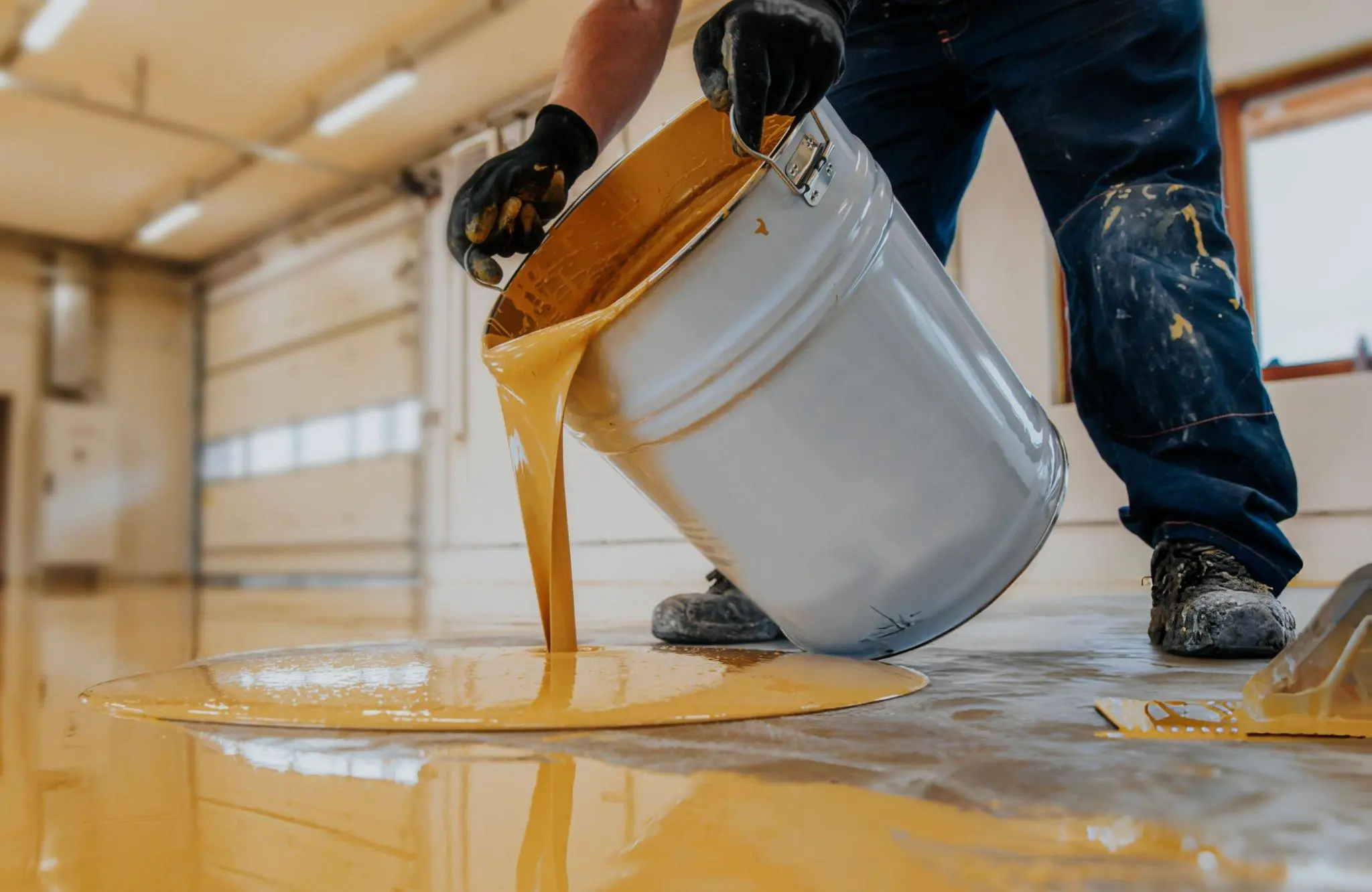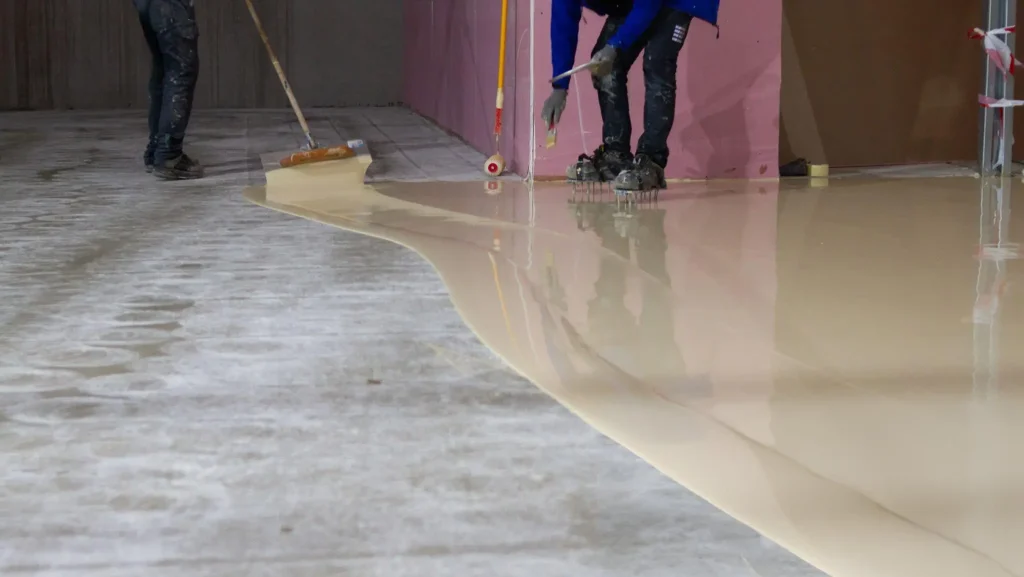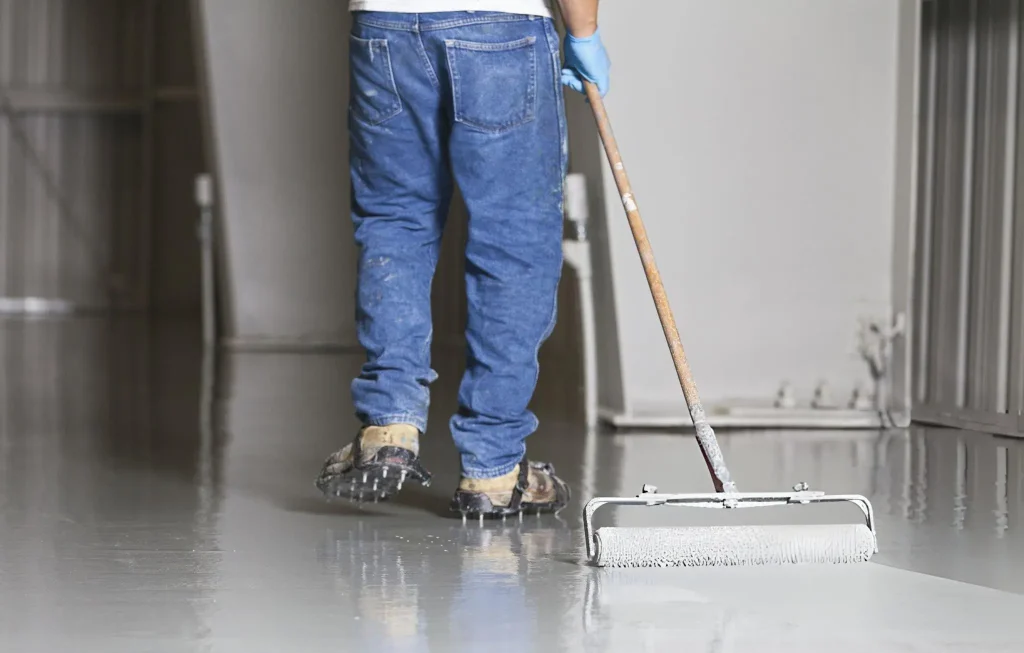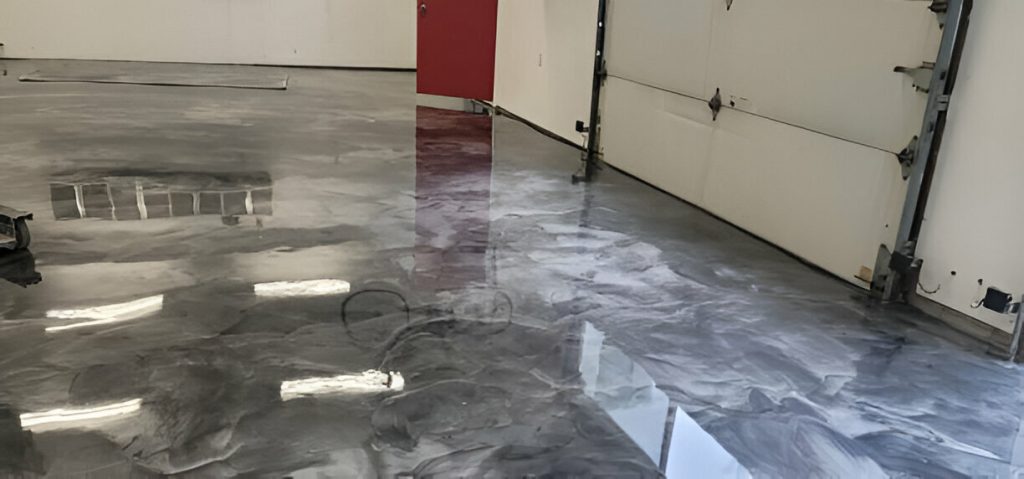Epoxy resin flooring is more than just your average floor choice, especially when you are decorating industrial spaces or updating your garage.
This dynamo of durability is not only tough but also resists scratches and scuffs.
It is also customizable and gives any area a visual uplift. The best part? It is not just made to last; it is designed to endure heavy foot traffic without a trap, providing you with the reassurance that your investment will pay off in the long run.
So, what is in this superhero flooring? Epoxy floors mix up science and style, crafted from layers of hardy resin that come in various types for different venues.
Whether it is a sleek warehouse look or a colorful workshop space, there is an epoxy solution just waiting to revamp your floor.
What is Epoxy Flooring?
Epoxy flooring is a surface made up of several layers of epoxy set down to a thickness of at least two millimeters. Now, where people often get tripped up is distinguishing between an epoxy floor and an epoxy floor coating.
If the epoxy layer is two millimeters thick or more, it qualifies as an epoxy floor. Anything thinner than that, and you are looking at what is called an epoxy floor coating.
Benefits of Epoxy Flooring
The following are the benefits of epoxy flooring:
1. Durability
Epoxy glue is not just sticky stuff; it is a bonding powerhouse.
Thanks to its dynamic duo of a hardener and adhesive, it undergoes a thermosetting process that is nothing short of a chemical ballet, much like evaluating the epoxy flooring price.
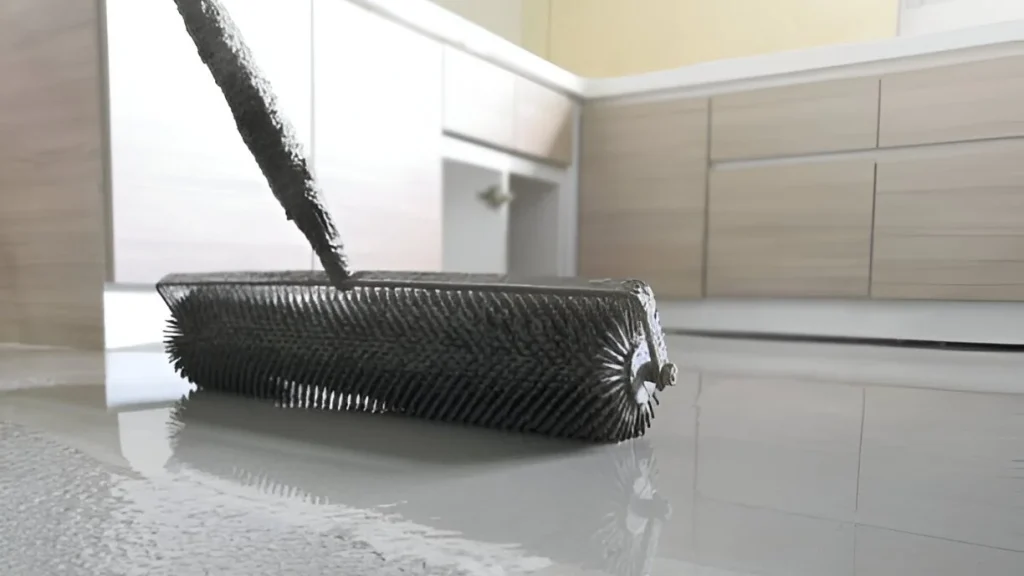
As these components combine, they trigger a robust chemical reaction, ultimately formulating a bond that is not only strong but built to last.
If you are keen on the specifics, it is the intricate interplay between these substances during the curing process that sets the stage for their hard strength.
2. Easy Maintenance
Epoxy flooring is extremely easy to maintain due to its smooth, seamless surface, which prevents dirt and stains from penetrating.
Regular cleaning involves simple sweeping and mopping, saving time and effort. Unlike other flooring types, epoxy does not require frequent sealing, waxing, or polishing, further reducing maintenance needs.
3. Moisture Resistance
Epoxy floors are your best chance against moisture—think of them as an invisible hero for your garage, basement, or kitchen floors.
Why? They block moisture, protecting the area beneath from any water problems.
This is handy in areas that get a lot of wet traffic. Also, they are not just moisture experts; they also stop mold and mildew, promoting a cleaner and healthier space. Handy, right?”
4. Cost-Effectiveness
While the initial installation cost of epoxy flooring might be higher compared to some alternatives, its durability and low maintenance requirements make it a cost-effective choice in the long run.
Epoxy floors can last for decades with minimal maintenance, reducing the need for frequent repairs or replacements and offering substantial savings over time.
Drawbacks of Epoxy Flooring
The following are the disadvantages of epoxy flooring:
1. Slippery When Wet
Epoxy flooring might look sleek, but beware—it turns into a slip-and-slide when wet. Thanks to its glass-like finish, it lacks the necessary grip for spill-prone areas like garages or kitchens.
A simple fix? Stir some silica sand or aluminum oxide into your epoxy mix. This is not just a DIY hack; it is a proven method to roughen up that slippery surface, providing the traction you need.
2. Difficult to Remove
Epoxy’s stellar stickiness makes it a winner for durability but a beast to remove. You are looking at a job that needs special tools and a chunk of your time and energy.
If you are thinking of tackling this at home, consider the professionals in epoxy flooring Penticton BC, who are ready for some potential DIY despair. Often, it is wiser to call in the experts. They have got the expertise to do it without wrecking the concrete beneath.
3. Limited Heat Tolerance
Epoxy flooring has a limited tolerance to high temperatures. Prolonged exposure to extreme heat can cause the epoxy to yellow or degrade over time.
This limitation makes epoxy less suited for areas exposed to direct sunlight or high-temperature environments.
If epoxy will be used in such settings, it is important to choose an epoxy formulation specifically designed to handle UV exposure.
How Long Does Epoxy Floor Last?
The durability of an epoxy flooring system depends on several factors: its thickness, the level of foot traffic it endures, and how well you maintain it.
On average, these floors can serve you well for 10 to 20 years—outperforming traditional painted concrete that manages to show wear rather quickly in busy spots. However, epoxies are not friends with the sun and tend to fade over time.
That is why we often recommend a protective layer of either urethane or polyaspartic topcoat to keep the color vibrant and the floor tougher
Types Of Epoxy Flooring
The following are the types of epoxy flooring:
1. Solid Color Epoxy
Pros: This epoxy is durable and has a sleek, high-gloss finish, making it perfect for bustling environments like warehouses and workshops. It’s simple application and minimal upkeep make it a dream for busy spots.
Cons: It does have its style limits, and without a special anti-slip mix, it might turn into a slip-and-slide.
Best for: Industrial and commercial zones where getting the job done trumps fancy looks.
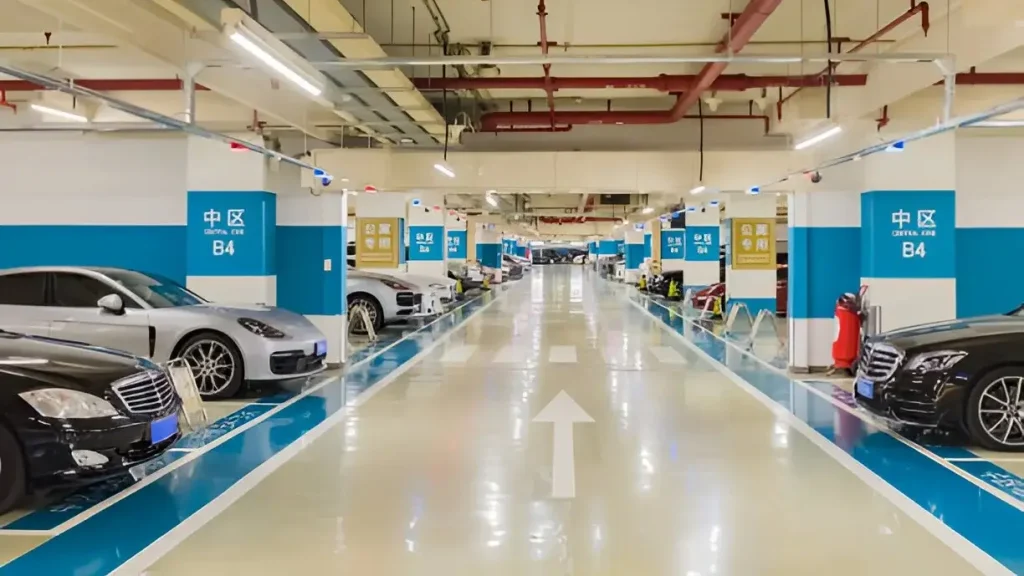
2. Metallic Epoxy
Pros: It has a top-tier, chic look complete with vibrant color shifts. Ideal for boosting the style of places like showrooms and home garages.
Cons: On the pricier side and tricky to set up. Needs an expert’s touch to get the perfect look.
Best For: Spicing up the aesthetics in both home and business environments—like kitchens, basements, or your favorite boutique.
3. Flake Epoxy
Pros: Provides a textured finish that improves slip resistance and hides flaws. Available in a variety of colors and patterns, making it customizable.
Cons: More complex installation process due to the need for multiple layers and a protective topcoat.
Best For: Garages, commercial kitchens, and areas with heavy foot traffic that require a durable, non-slip surface.
4. Quartz Epoxy
Pros: Built tough and with a no-slip grip, these surfaces are for splash zones and busy spots. Likewise, they come in vivid colors and textures that will update up any space.
Cons: You might need to break open the bank, though. These are not cheap, and setting them up is no small feat.
Best For: Whether you are decorating a commercial kitchen, upgrading a restroom, or making a pool deck safe, this choice is best for areas that need to stand up to the hustle and keep slick spots in check.
Applications Of Epoxy Flooring
Residential Applications of Epoxy Flooring
1. Garages
Opting for residential epoxy flooring in your garage is a smart move, especially if you are all about maintaining a sharp, clean look without sweating over maintenance.
This type of flooring is tough, similar to the reliability offered by epoxy flooring services, handling everything from oil spills to the daily grind of your car’s comings and goings with ease.
It is not just about toughness, though. The smooth, high-shine surface of epoxy not only makes cleaning easy but also throws back light, brightening up your space significantly.
2. Basement
In basements, epoxy flooring delivers a moisture-resistant surface that stops water damage and mold growth.
This is particularly beneficial in basements prone to dampness. Epoxy’s seamless nature makes it easy to clean, confirming that any spills or leaks can be quickly managed without seeping into the floor below.
3. Laundry Rooms
Epoxy flooring is best for your laundry zone! Why? Because it is hard, shrugging off water and soap spills.
The coolest part? It is all one piece, so no sneaky water gets underneath to mess up your floor. Cleanup is simple too—just wipe and go! However, throw in some anti-slip to keep it safe when things get vivid.
Applications of Epoxy Flooring in Commercial Settings
1. Retail Showrooms
Thanks to their sleek look and uncompromising quality, epoxy floors are a smart choice for retail showrooms.
Their shiny surfaces add glamour and throwback light, brightening the space by 200%. You can pick from a rainbow of colors and designs so they sync up perfectly with your store’s branding.
2. Restaurants and Kitchens
In restaurants and commercial kitchens, epoxy flooring provides practical benefits due to its chemical resistance and ease of cleaning.
This type of flooring is non-porous, preventing spills and stains from penetrating the surface. It can resist frequent cleaning with harsh chemicals, ensuring keeping with hygiene standards.
The nature of epoxy flooring eliminates grout lines where dirt and bacteria can accumulate, making it ideal for maintaining a clean environment
3. Warehouses and Industrial Settings
Epoxy flooring is the best option for your warehouse or industrial space, and I learned it was needed!
It is not just durable but practically invincible under the pressure of huge forklifts and heavy equipment, though one might wonder if epoxy resin is toxic when considering such solutions.
Cracks and deterioration? Not on its watch. Spills from oils, solvents, and other harsh chemicals do not match its chemical-resistant shield, safeguarding the underlying concrete like a trusty helper.
Not only is it robust, but cleaning is simple, too.
Step-by-Step Guide to Installing an Epoxy Floor
Here’s the simple guide on how to install an epoxy floor:
Step 1. Surface Preparation
Begin by thoroughly cleaning the concrete floor and removing any grease, oil, or stains with a degreaser. Patch any cracks or holes utilizing an epoxy filler and sand the surface if necessary to ensure it is smooth and debris-free. This step is important for proper adhesion of the epoxy coating.
Step 2. Priming
Apply an epoxy primer to the prepared surface. The primer seals the concrete and provides a better base on which the epoxy coating can stick. Allow the primer to dry completely, typically for 12-24 hours.
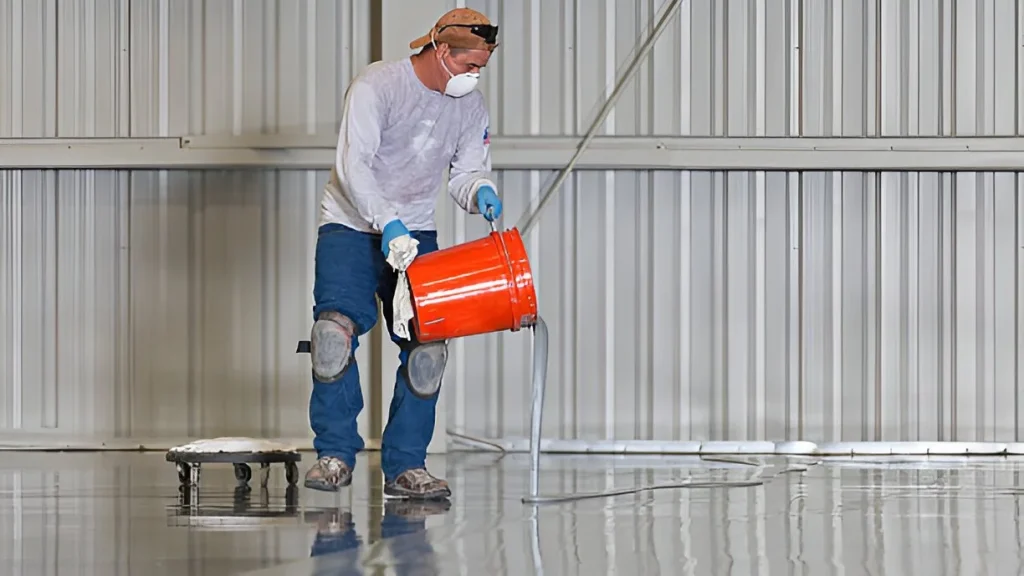
Step 3. Mixing Epoxy Resin
Follow the manufacturer’s instructions to mix the epoxy resin and hardener. Use a drill with a stirring attachment to secure a thorough mix. Be sure to mix only as much as you can apply within the working time specified by the manufacturer.
Step 4. Application
Pour the mixed epoxy onto the floor and spread it using a 9-inch roller or a squeegee for even coverage. Work in small sections to keep a wet edge and control the epoxy from drying out before you finish applying it. At this stage, you can add decorative flakes or chips if desired.
Step 5. Curing
After application, allow the epoxy to cure. The curing time can vary depending on the product and environmental conditions, but it typically takes at least 24 hours. Avoid walking on the floor until it has fully cured to stop damage.
Step 6. Final Touches
Once the epoxy has cured, apply a clear topcoat to add extra protection and a glossy finish. This step can improve durability and make the floor easier to clean. Allow the topcoat to cure according to the manufacturer’s recommendations before using the area.
Epoxy Flooring FAQs
What is the cost of epoxy flooring in Canada?
Canada’s epoxy flooring costs typically range between $7 and $11 per square foot. This price includes both materials and installation.
What is the downside of epoxy flooring?
One of the main downsides of epoxy flooring is its susceptibility to cracks and chips over time, especially if the surface underneath is improperly prepared or maintained.
Are epoxy floors slippery?
Epoxy floors are generally not slippery when dry. However, they can become slippery when wet, so it is essential to add slip-resistant additives if the floor is in an area prone to moisture.
Conclusion
This flooring solution is tricky, withstanding everything from busy restaurant traffic to the heavy-duty demands of industrial areas.
It is not only about durability; it is also about style. Tailor-made for any setting, epoxy floors combine practicality and grace. Whether updating an entryway or strengthening a workspace, epoxy flooring steps up to the challenge.

